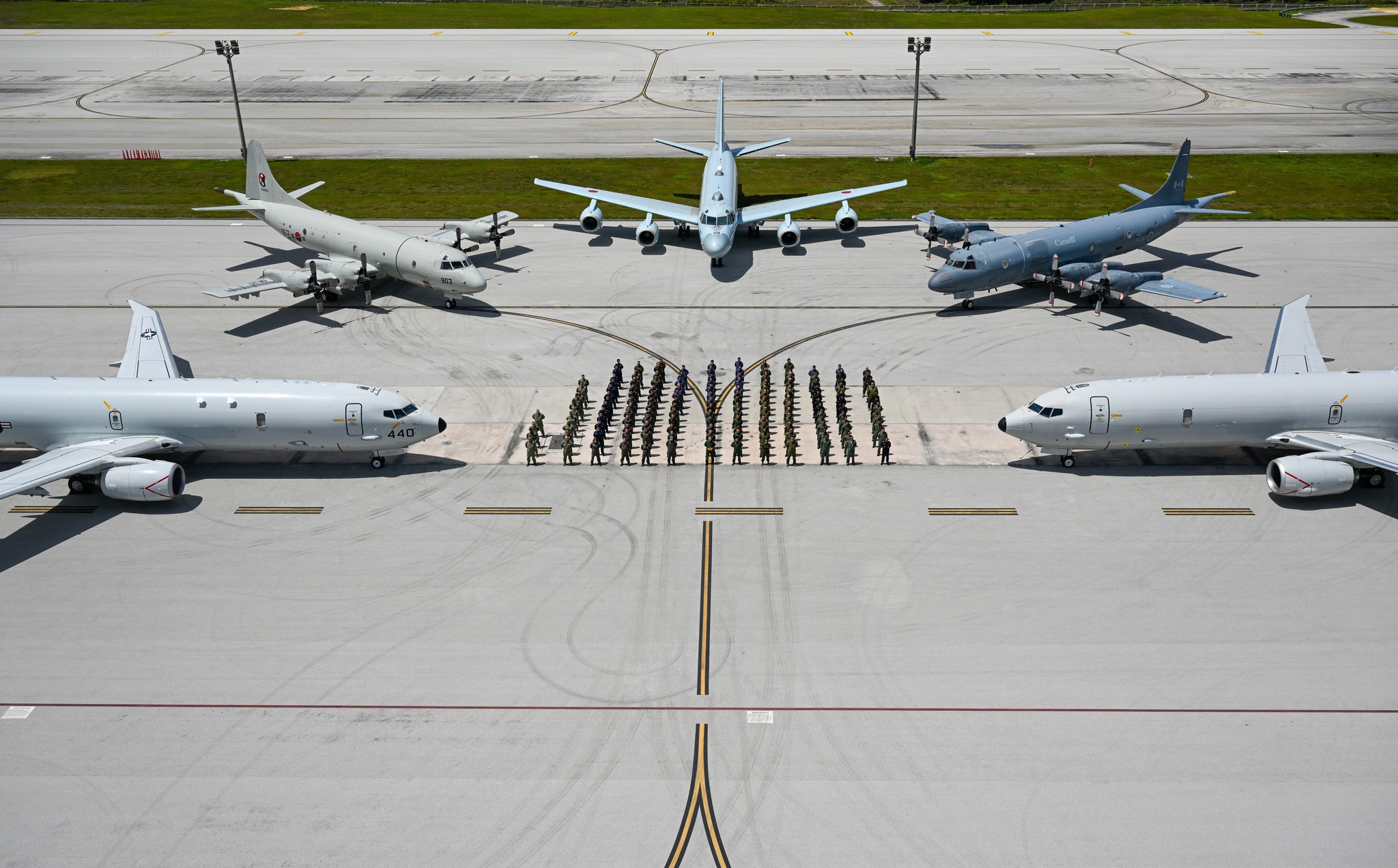The U.S. Navy and four allied and partner nations concluded operations for the annual, multi-national exercise Sea Dragon 2023, March 29. Sea Dragon is a U.S.-led, multinational exercise designed to practice and discuss anti-submarine warfare tactics to operate together in response to traditional and non-traditional maritime security challenges in the Indo-Pacific region. In its fifth year, Sea Dragon 23 brought Maritime Patrol and Reconnaissance Aircraft (MPRA) communities together from the Royal Canadian Air Force (RCAF), Indian Navy (IN), Japan Maritime Self-Defense Force (JMSDF), Republic of Korea Navy (ROKN), and the United States Navy. The two-week exercise, which began March 15, focused on advanced-level anti-submarine warfare (ASW) tactics training – as well as successful integration and participation with U.S. allies and partners in the Indo-Pacific region.
“Exercise Sea Dragon is a significant opportunity to work with and build upon our strong multi-national relationships while we share and hone complex warfighting skills,” Joint Region Marianas Commander Rear Adm. Benjamin Nicholson said.
“Sea Dragon is an invaluable exercise. It gives participating countries’ ASW teams a platform to showcase and improve the interoperability of their systems, to understand the ASW procedures, to streamline our processes, and to grow as a team,” said IN Lt. Cmdr. Ankita Shambhudas.
“The Kawasaki P-1 aircraft is made in Japan and has excellent anti-submarine capability. To continue to provide quality security in the Indo-Pacific region, cooperating and training among other countries is essential,” said JMSDF Lt. Cmdr. Motoya Tomioka, assigned to JMSDF First Air Group.

Commander, Task Force (CTF) 72 sent two P-8A Poseidon aircraft from Patrol Squadron (VP) 10 “Red Lancers” and VP-45 “Pelicans”. Upon exercise completion, squadrons completed 35 missions with approximately 170 flight hours logged between all participants. JMSDF won this year’s Sea Dragon Championship Belt, highlighting high scores in simulated torpedo deployment speed and accuracy across four attacks on target. CTF-72 staff, along with U.S. Naval Undersea Warfare Center reps from Japan and Hawaii, conduct the grading to determine the winner. The IN, ROKN and VP-45 were awarded additional prizes for other notable ASW performances during the competition. The primary objective of Sea Dragon 23 was high-competency demonstration and practice of advanced ASW integrated training alongside allied and partner nations committed to the team effort of maintaining security in the Indo-Pacific region.
Aside from the U.S. P-8A Poseidon, allied and partner aircraft participating in this exercise were the RCAF CP-140 Aurora, JMSDF Kawasaki P-1, ROKN P-3 Orion, and IN P-8I Neptune. During the exercise, aircrews also coordinated ASW evolutions against simulated and practice targets, demonstrating their ability to successfully attack an objective from the air. The Red Lancers of VP-10, part of CTF-72, are stationed in Jacksonville, Florida, and are currently deployed to Kadena Air Base in Okinawa, Japan. The Pelicans of VP-45, part of CTF-72, are also stationed in Jacksonville, Florida, and are currently deployed to Misawa Air Base, Japan. Throughout the deployment, both squadrons have conducted maritime patrol and reconnaissance and theater outreach operations within the U.S. 7th Fleet area of operations. U.S. 7th Fleet is the U.S. Navy’s largest forward-deployed numbered fleet, and routinely interacts and operates with allies and partners in preserving a free and open Indo-Pacific region.















